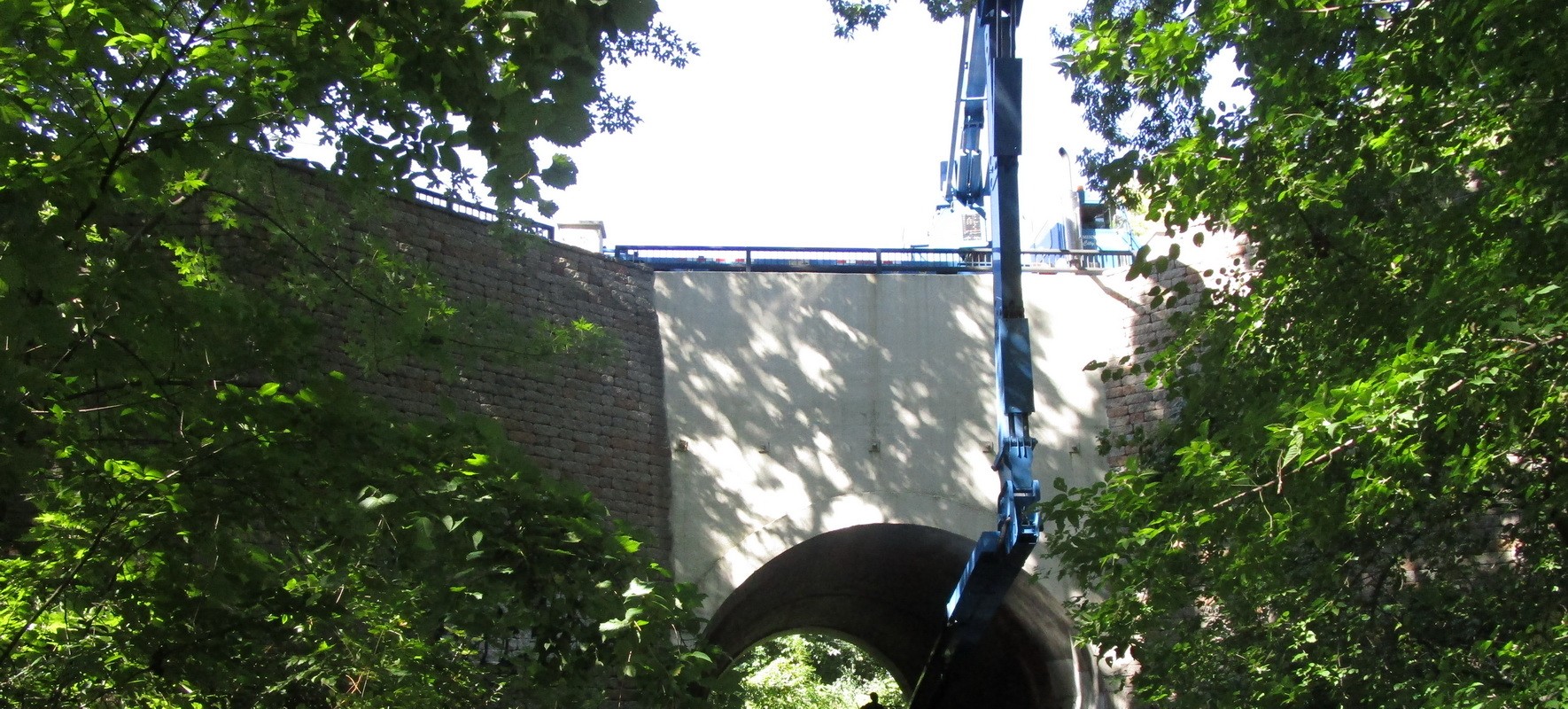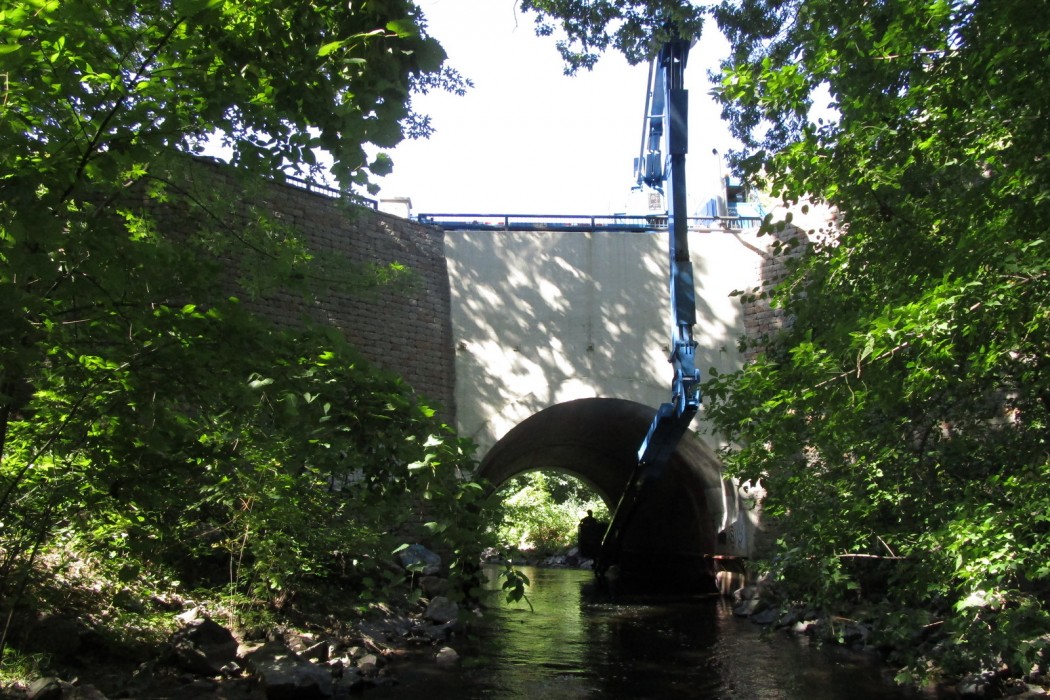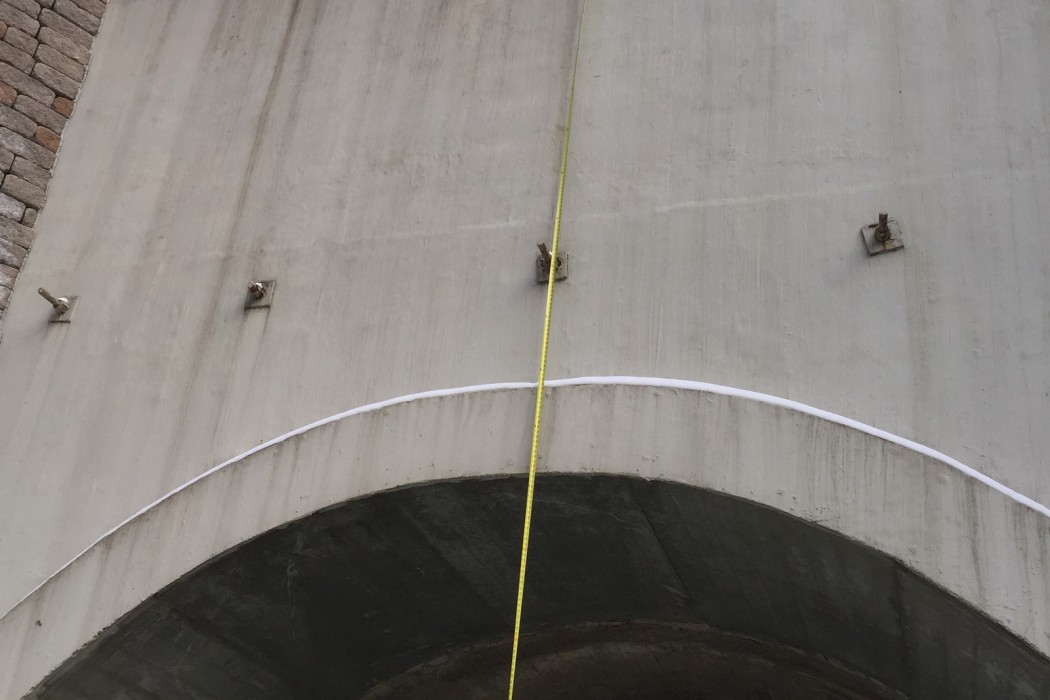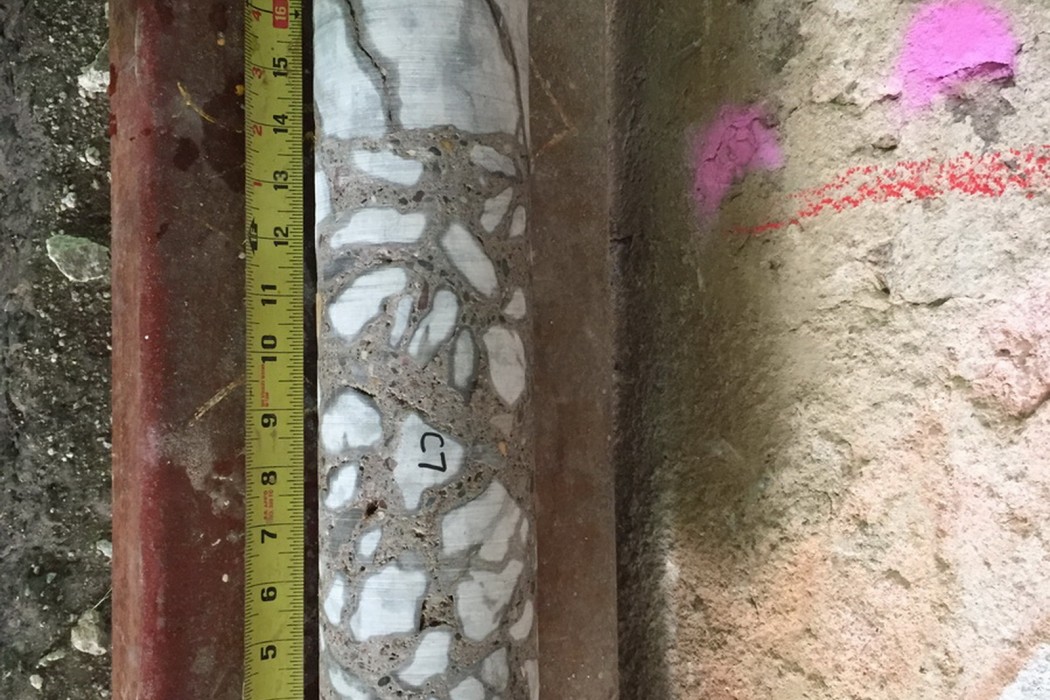WJE PROJECTS
MnDOT Bridge No. 90490


CLIENT |
City of Minneapolis Department of Public Works |
LOCATION |
Minneapolis, MN |
Condition Assessment and Recommendations for Rehabilitation
After over 115 years of service in a harsh northern climate, the original arch section and abutments of Bridge No. 90490 exhibited widespread cracking and concrete distress. WJE was retained to perform a condition assessment of the original bridge elements to evaluate the feasibility of rehabilitation and, as possible, identify conceptual options for rehabilitation, which could be implemented without requiring bridge closure or adversely impacting the historic resources.
BACKGROUND
MnDOT Bridge No. 90490 carries Penn Avenue South over Minnehaha Creek in a residential area of south Minneapolis. The bridge was originally constructed circa 1902 and is eligible to be listed on the National Register of Historic Places. The bridge is a filled spandrel arch constructed of reinforced cast-in-place concrete. The bridge carries two lanes of traffic over the creek, northbound and southbound. The bridge was modified in 2003 as a component of a sidewalk widening project that included the installation of new concrete sections alongside the original arch section and original abutments.
SOLUTION
WJE utilized visual inspection and nondestructive evaluation techniques in the field, partnered with laboratory and petrographic analyses of core samples, to understand the construction and condition of the historic bridge and identify the deterioration mechanisms that existed.
The exposed surfaces of the arch section and abutments exhibited many areas of concrete distress, which was determined to be the result of poor cover control during the original construction, and both carbonation-induced and chloride-induced corrosion of reinforcing steel. Several regions of deep freeze-thaw deterioration to the non-air-entrained historic concrete were also identified along the sides of the arch, and near the waterline of the abutments. However, considering the short span and robust nature of the structure, these distress conditions were determined by WJE to be largely cosmetic, and they could be tolerated by the bridge without threatening its overall structural integrity or ability to function as a water crossing.
Based on the condition assessment, WJE identified two different conceptual options for treatment of the original arch and abutments of the bridge. Each option was intended to preserve the historic resource, extend the service life of the structure, and result in minimal disruption to bridge and creek users.
RELATED INFORMATION
-
 Our knowledge of bridge performance is supported by technical expertise in structural... MORE >Services | Bridge Engineering
Our knowledge of bridge performance is supported by technical expertise in structural... MORE >Services | Bridge Engineering -
 We have pioneered the use of nondestructive evaluation methods—such as ground penetrating... MORE >Services | Nondestructive Evaluation
We have pioneered the use of nondestructive evaluation methods—such as ground penetrating... MORE >Services | Nondestructive Evaluation -
 Learn about our Minneapolis office MORE >Offices | Minneapolis
Learn about our Minneapolis office MORE >Offices | Minneapolis






































